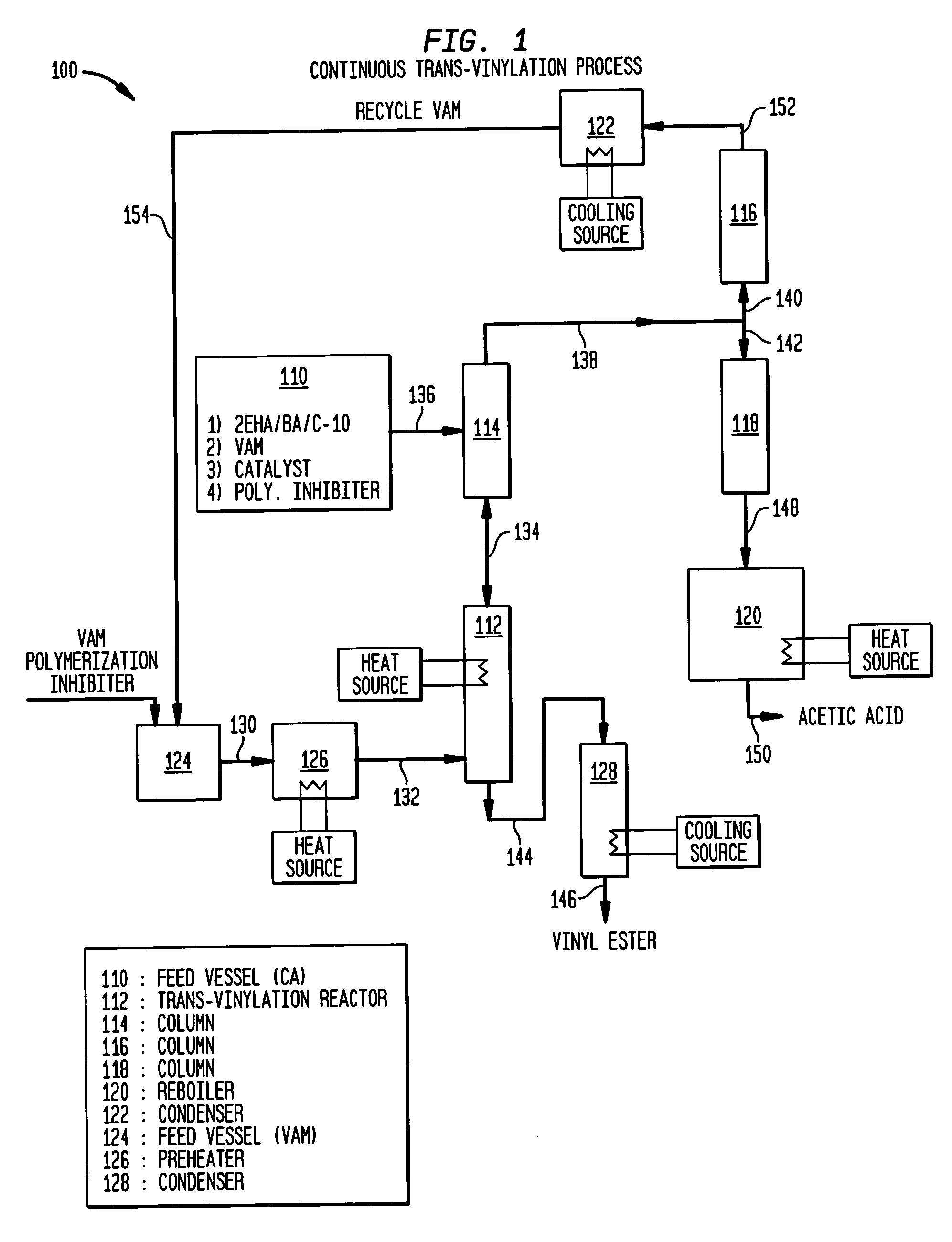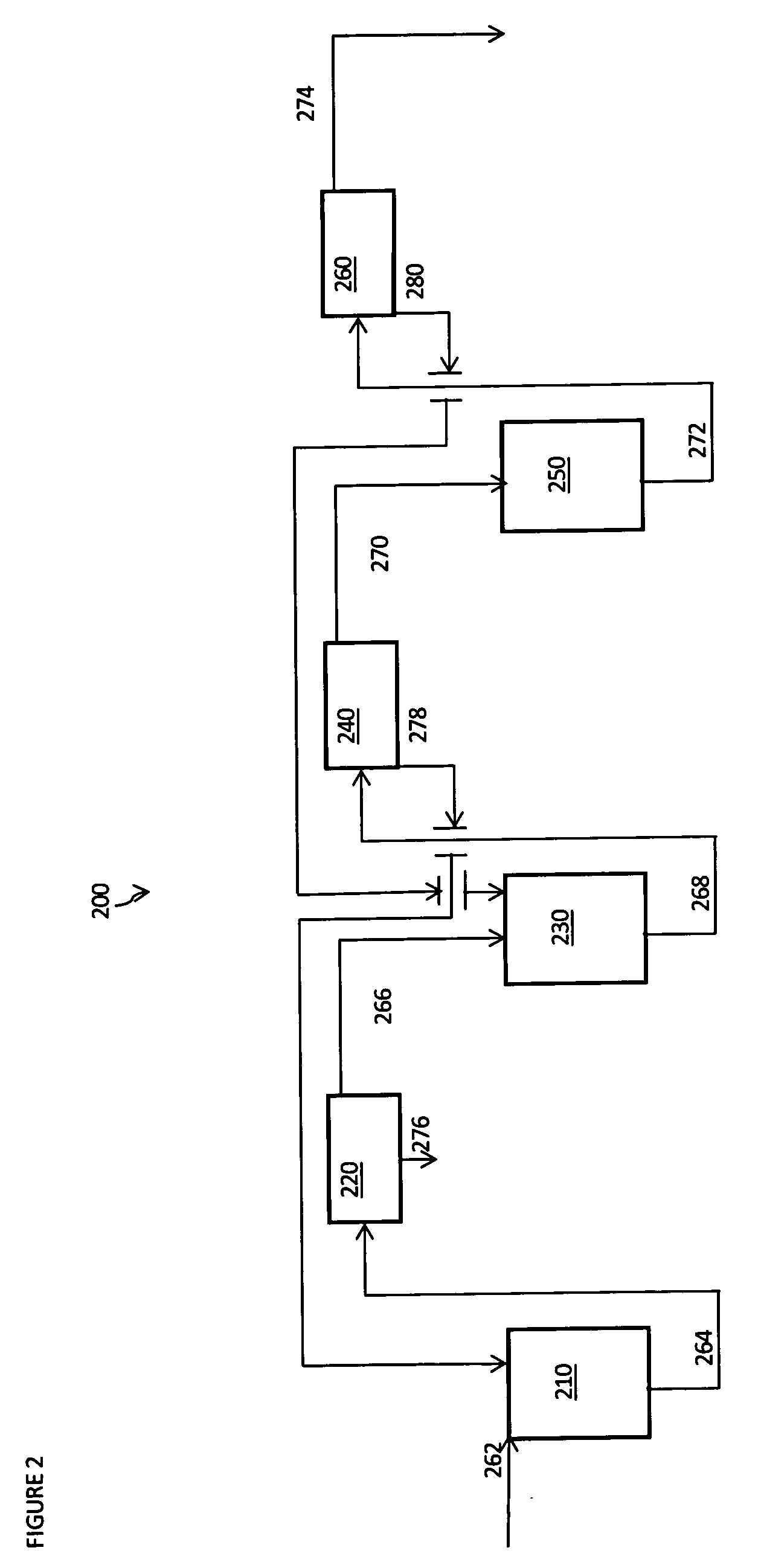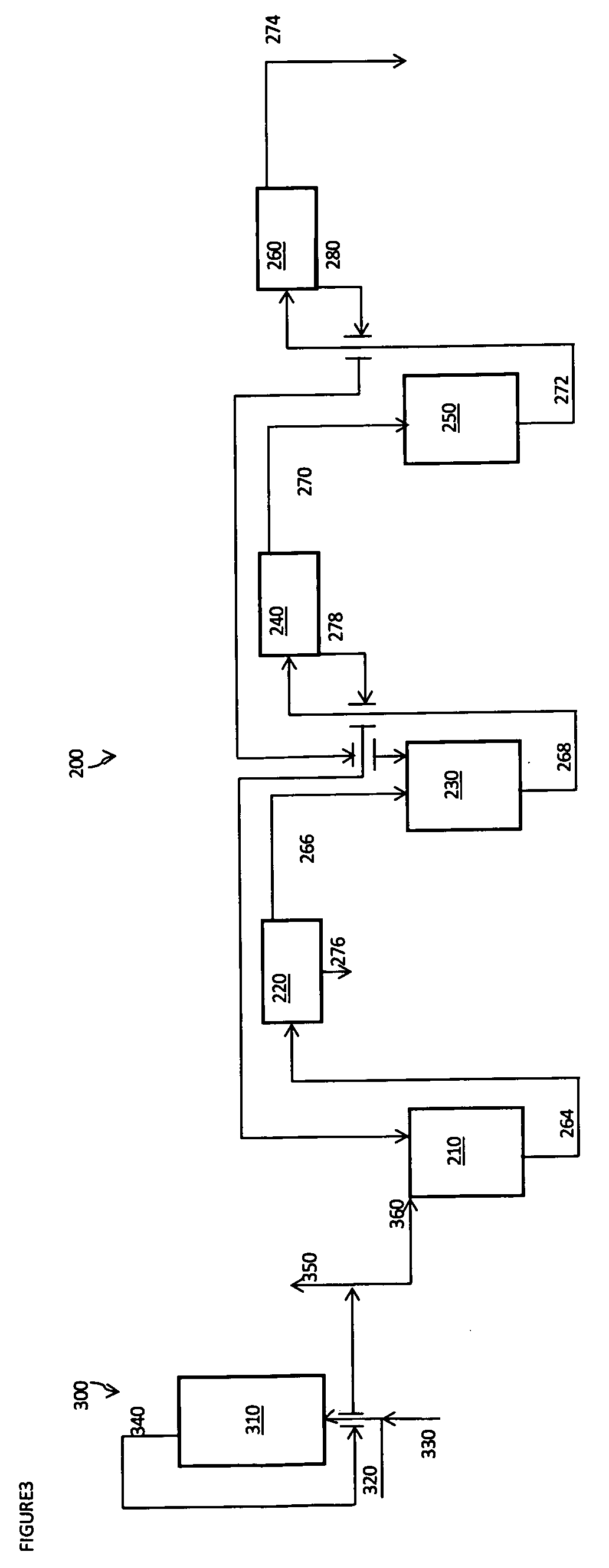Process for the continuous transvinylation of carboxylic acids with vinyl acetate
a technology of vinyl acetate and carboxylic acids, which is applied in the direction of climate sustainability, chemistry apparatus and processes, organic chemistry, etc., can solve the problems of ineffective catalyst, no longer used mercury salts, and carbon monoxide atmosphere, and achieve the effect of more economical rou
- Summary
- Abstract
- Description
- Claims
- Application Information
AI Technical Summary
Benefits of technology
Problems solved by technology
Method used
Image
Examples
examples 1-7
(Invention): Continuous Operation
[0079]Utilizing the materials, techniques, and amounts described generally further below, the process of the invention was operated continuously using a reactive distillation column (RXDC), of the class illustrated in FIG. 1. The catalyst used was diacetato palladium (II)-2,2′-bipyridyl complex.
[0080]The continuous reactive distillation apparatus is best shown in FIG. 1. The apparatus 100 comprises a carboxylic acid feed vessel 110; a transvinylation reactor 112, such as a tubular bubble column, provided with an additional packed column 114 placed on top of the reactor 112; a rectification column 116; a stripping column 118; a reboiler 120; a condenser 122; a VAM feed vessel 124; a VAM pre-heater / vaporizer 126; and a product cooler 128.
[0081]A pre-mixed feed of CA, VAM and catalyst from the carboxylic acid feed vessel 110 was charged to column 114 via line 136. VAM from VAM feed vessel 124 was passed through preheater 126 via line 130. The CA along w...
example 8
Catalyst Preparation
[0099]Catalyst was prepared using palladium acetate and a bidentate ligand such as 2,2′-bipyridyl. This catalyst was prepared generally using toluene as the solvent. Palladium (II) acetate was heated in toluene to 80° C. A solution of 2,2′-bipyridyl in toluene was added over a one hour period. The reaction was continued for two to four hours and then the catalyst reaction mixture was cooled. A catalyst complex, having a mole ratio of palladium (II) acetate to 2,2′-bipyridyl of from about 1:1.1 to 1:1.4, precipitated as a solid. The precipitate was filtered, washed with toluene, and dried under reduced pressure prior to use.
[0100]Another catalyst was prepared using a different bidentate ligand such as 1,10-Phenanthroline. The solubility of 1,10-Phenanthroline is negligible in toluene even at high temperature. Hence instead of toluene, acetonitrile, a very polar solvent, was used for preparation of the catalyst complex. Alternative solvents that may be used for pre...
examples 9-12
Effect on Transvinylation Reaction Using Catalyst Prepared with Bi-Dentate Ligand
[0104]A catalyst was prepared by using 1,10-phenanthroline as bi-dentate ligand. The catalyst prepared was a diacetato-palladium (II)-1,10-phenanthroline complex. The catalyst was isolated in solid form, dried and used in the reaction.
[0105]A V-2-EH run was performed with a palladium concentration of 626 ppm based on the mass of 2-EHA in a batch system. After six hours running at 100° C., the conversion achieved was 84.26%. A VB run was also performed with a palladium concentration of 626 ppm based on the mass of BA in a batch system. After six hours running at 100° C., the conversion achieved was 75.56 wt %. In both runs, vinyl acetate was provided in a molar vinyl acetate:carboxylic acid ratio of 4:1. The catalyst performance for each run was at par with the catalyst prepared by using a bi-dentate bipyridyl ligand.
[0106]
TABLE 4Ligand effect on transvinylation.Example No.9101112LigandBis-Bis-1,10-1,10-...
PUM
| Property | Measurement | Unit |
|---|---|---|
| temperature | aaaaa | aaaaa |
| temperature | aaaaa | aaaaa |
| concentration | aaaaa | aaaaa |
Abstract
Description
Claims
Application Information
 Login to View More
Login to View More - R&D
- Intellectual Property
- Life Sciences
- Materials
- Tech Scout
- Unparalleled Data Quality
- Higher Quality Content
- 60% Fewer Hallucinations
Browse by: Latest US Patents, China's latest patents, Technical Efficacy Thesaurus, Application Domain, Technology Topic, Popular Technical Reports.
© 2025 PatSnap. All rights reserved.Legal|Privacy policy|Modern Slavery Act Transparency Statement|Sitemap|About US| Contact US: help@patsnap.com



